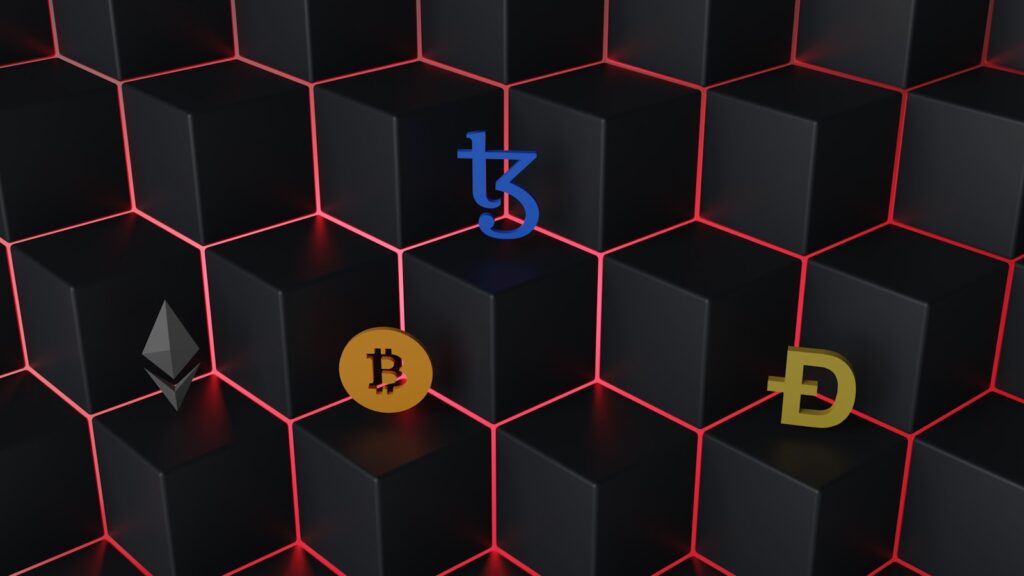Main Points:
- Oversaturation of the Altcoin Market: The current supply of altcoins has skyrocketed, exceeding historical numbers by a significant margin.
- Decline of the Altcoin Season: Analysts predict that the excessive number of tokens may have ended the sustained growth phase known as the altcoin season.
- Challenges for Investors: The abundance of options complicates portfolio management, making it difficult to identify high-quality tokens.
- Market Dilution Concerns: The proliferation of meme coins and low-quality tokens is diluting the market, leading to decreased investor confidence.
- Survival of the Fittest: Only altcoins with strong utility and compelling narratives are expected to survive and thrive in the long term.
- Potential Institutional Interest: Some utilitarian altcoins may still attract institutional investors, signaling selective opportunities within the market.
- Ethereum’s Leadership: Ethereum is anticipated to lead the next market upswing, driven by its robust ecosystem and continuous development.
The cryptocurrency landscape has been a hotbed of innovation and speculation since the inception of Bitcoin. Among the myriad digital assets, altcoins—cryptocurrencies other than Bitcoin—have played a pivotal role in shaping the market dynamics. However, recent analyses and market observations suggest that the altcoin season, a period characterized by altcoins outperforming Bitcoin, might be drawing to a close. This shift is primarily attributed to the oversaturation of the altcoin market, raising concerns about the sustainability of future growth and the overall health of the cryptocurrency ecosystem.
Oversaturation of the Altcoin Market
The term “altcoin season” refers to phases when altcoins exhibit significant price appreciation, often outpacing Bitcoin and attracting substantial investor interest. Historically, notable periods of altcoin seasons include the 2017-2018 market cycle, where Ethereum (ETH), Ripple (XRP), and Litecoin (LTC) experienced meteoric rises, fueling an explosive growth phase for the altcoin market.
According to Ali Martinez, a cryptocurrency analyst, the current supply of altcoins is unprecedented. Citing data from Dune Analytics, Martinez highlighted that there are now over 36.4 million altcoin variants in existence. This figure starkly contrasts with previous market cycles; during the 2017-2018 altcoin season, there were fewer than 3,000 altcoins, and in the 2013-2014 period, the number was under 500. This exponential increase in token supply has led to market dilution, making it increasingly challenging for individual altcoins to maintain significant value and investor interest.
Decline of the Altcoin Season
The oversupply of altcoins is a critical factor contributing to the perceived decline of the altcoin season. When the number of available tokens surpasses the demand, it creates a saturated market where only the most resilient and innovative projects can sustain growth. Economists like Alex Krueger echo this sentiment, emphasizing that the surplus of tokens will likely prevent the continuation of a prolonged altcoin season. Krueger predicts that any remaining altcoin season may be short-lived, lasting only a few days to weeks, rather than the extended periods witnessed in the past.
This outlook is supported by current market data, which shows that while Bitcoin’s market capitalization has more than doubled since 2021, reaching $2.07 trillion, the total market cap for altcoins stands at $1.6 trillion. This is a notable decrease from the peak of $1.9 trillion in December 2024, marking a 15.8% reduction. Such figures indicate a waning investor appetite for altcoins, as the market grapples with an overabundance of choices and diminishing returns.
Challenges for Investors
The sheer volume of altcoins presents significant challenges for investors. With thousands of tokens to choose from, identifying those with genuine value and growth potential has become increasingly difficult. This complexity mirrors the challenges faced in traditional stock markets, where an overabundance of options can lead to analysis paralysis and suboptimal investment decisions.
Investors must now navigate a crowded field, where distinguishing between high-quality projects and those with little to no merit requires thorough research and due diligence. The risk of investing in low-quality tokens is heightened, as many altcoins fail to deliver on their promises or fall victim to market volatility and speculative trading.
Market Dilution Concerns
One of the most pressing issues stemming from the oversupply of altcoins is market dilution. The influx of meme coins and low-quality tokens has contributed to a fragmented market, where investor attention is spread thinly across numerous projects. Ash Crypto, an anonymous trader, expressed concerns about this dilution, criticizing exchanges for listing an overwhelming number of meme coins to boost trading volumes and expand their user base.
According to CryptoQuant’s CEO, Ju Giyong, the proliferation of such tokens leads to a diluted market environment where only a select few can maintain relevance and value. Small-scale investors are particularly vulnerable, as the majority of them may invest in meme coins that subsequently plummet by up to 80%, resulting in significant losses and a loss of confidence in the altcoin market.

Survival of the Fittest
Amidst the chaos of an oversaturated market, only altcoins that offer substantial utility and possess a strong narrative are expected to survive and thrive. Ju Giyong emphasizes that while the market may see a decline in overall altcoin activity, those projects with practical applications and robust development teams will continue to attract investor interest and sustain long-term growth.
This perspective aligns with the broader trend in the cryptocurrency space, where projects are increasingly evaluated based on their real-world utility, technological innovation, and ability to solve tangible problems. Tokens that can demonstrate clear value propositions and integrate seamlessly into existing or emerging ecosystems are more likely to endure market downturns and emerge stronger.
Potential Institutional Interest
Despite the pessimistic outlook from some analysts, there remains a glimmer of hope for the altcoin market, particularly for projects that prioritize utility and have the potential to attract institutional investors. Michael van de Poppe, a cryptocurrency analyst, suggests that utilitarian altcoins could still capture the interest of institutional players, who are often more focused on long-term viability and real-world applications rather than speculative gains.
Institutional investors bring a level of credibility and capital that can drive significant growth for high-quality altcoins. Their involvement typically signals a vote of confidence in the project’s fundamentals and future prospects, potentially leading to increased adoption and stability in the token’s value.
Ethereum’s Leadership
In the midst of these turbulent market conditions, Ethereum stands out as a beacon of resilience and potential leadership for the next market upswing. As the second-largest cryptocurrency by market capitalization, Ethereum has established itself as the backbone of the decentralized finance (DeFi) ecosystem and a hub for non-fungible tokens (NFTs).
Ethereum’s continuous development, including upgrades to its scalability and security, positions it well to drive future growth. Analysts predict that Ethereum will lead the next bull run, leveraging its extensive developer community and widespread adoption to maintain its dominance in the cryptocurrency market. Van de Poppe forecasts that Ethereum could spearhead the most robust market rally in 2025, earning the label of the “most disliked bull market” due to its strong fundamentals and widespread utility.
Emerging Trends and Future Outlook
As the cryptocurrency market evolves, several emerging trends could influence the future trajectory of altcoins and the overall market sentiment:
- Regulatory Developments: Increased regulatory scrutiny may lead to a consolidation of the market, where only compliant and transparent projects survive. Regulatory clarity can also attract more institutional investors, fostering a more stable and mature market environment.
- Interoperability Solutions: Projects focusing on interoperability between different blockchain networks could enhance the utility and adoption of altcoins. Seamless communication and integration between various blockchains can create more robust and versatile ecosystems.
- Decentralized Finance (DeFi) Expansion: The continued growth of DeFi platforms will likely drive demand for utility-focused altcoins that provide essential services such as lending, borrowing, and decentralized exchanges.
- Sustainability and Energy Efficiency: As environmental concerns gain prominence, altcoins that prioritize energy-efficient consensus mechanisms and sustainable practices may attract more attention and investment.
- Layer 2 Scaling Solutions: Enhancements in scalability through Layer 2 solutions can improve transaction speeds and reduce costs, making altcoins more attractive for everyday use and broadening their appeal to a wider audience.
Investor Strategies in a Saturated Market
Navigating an oversaturated altcoin market requires strategic planning and a focus on quality over quantity. Here are some strategies investors can employ to maximize their chances of success:
- Thorough Research: Investors should conduct comprehensive research on the projects they are interested in, evaluating factors such as the development team, technology, use case, and community support.
- Diversification: While it may seem counterintuitive in a saturated market, diversification across a select number of high-quality altcoins can mitigate risks and capitalize on multiple growth opportunities.
- Long-Term Perspective: Adopting a long-term investment horizon can help investors ride out short-term volatility and benefit from the sustained growth of robust projects.
- Staying Informed: Keeping abreast of the latest market trends, technological advancements, and regulatory changes is crucial for making informed investment decisions.
- Risk Management: Implementing effective risk management strategies, such as setting stop-loss orders and not investing more than one can afford to lose, is essential in a highly volatile market.
Future outlook
The current state of the altcoin market presents a complex landscape marked by both challenges and opportunities. The oversaturation of tokens has undeniably dampened the momentum of the altcoin season, making it difficult for new and existing projects to stand out. However, this period of consolidation may ultimately lead to a more mature and resilient cryptocurrency ecosystem, where only the most innovative and utility-driven altcoins thrive.
For investors, the key lies in navigating this crowded market with discernment, focusing on quality projects that offer real-world applications and have strong development foundations. As the market continues to evolve, selective investment in high-potential altcoins, coupled with a strategic approach, can still yield substantial rewards.
Ethereum’s anticipated leadership in the next market upswing underscores the importance of established platforms with robust ecosystems. By leveraging the strengths of such dominant players and staying attuned to emerging trends, investors can position themselves to capitalize on the evolving dynamics of the cryptocurrency market.
In essence, while the end of the traditional altcoin season may signal a shift in market dynamics, it also heralds the emergence of a more focused and sustainable landscape where value and utility take precedence over sheer quantity.


